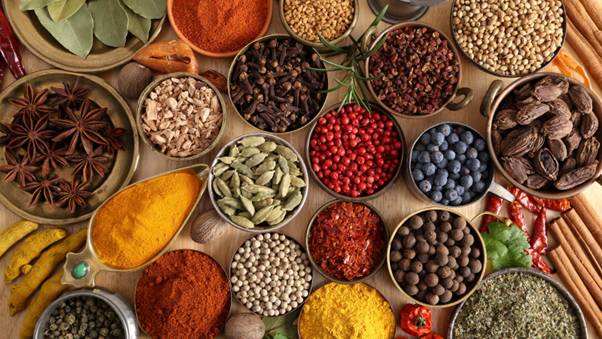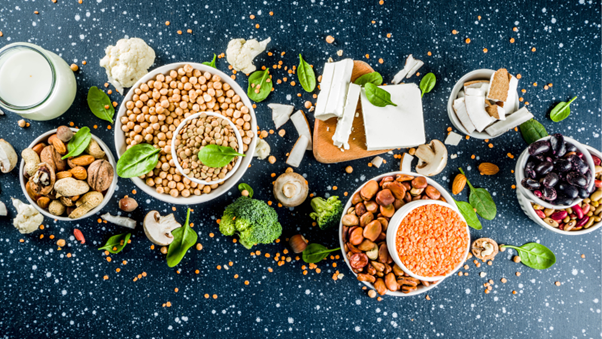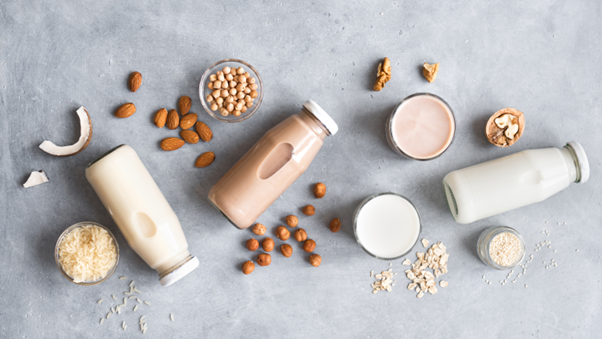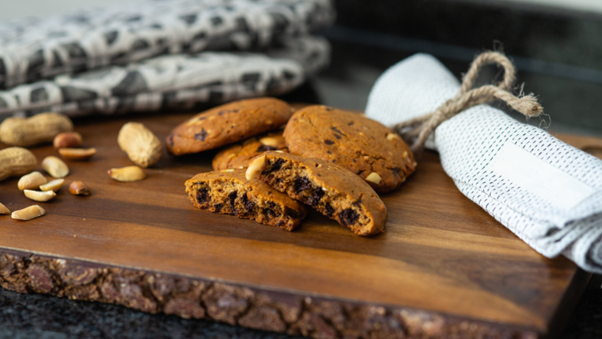As more people become health-conscious and environmentally aware, veganism has become a popular dietary choice. However, some may find it challenging to find creative and tasty vegan recipes, which is where enhancing your culinary skills can come in handy. By experimenting with different ingredients and techniques, you can create delicious vegan meals. Today, we’re going to discuss the basics of vegan cooking and the substitutes available to let you customise any recipe.
Vegan life advice 101: Spice will Suffice

Spices are the backbone of a vegan kitchen. With the correct use of spices, your vegan meals can compete with any traditional meat-filled dish on both aroma and taste.
Think of spices as the ‘flavour boosters’ for your plant-based ingredients, lifting their natural tastes to a whole new level. Some of the go-to spices in vegan cooking are cumin, coriander, turmeric, ginger, and paprika. They can help you craft an assortment of flavour profiles, from a kick of spice to a subtle sweetness.
But the best part? Spices aren’t just about flavour. They bring along a host of health benefits, too. Check out our table:
| Spice | Health Benefits |
| Turmeric | Anti-inflammatory |
| Ginger | Antinausea agent |
| Cumin | Weight loss, cholesterol, stress management |
| Cinnamon | Antimicrobial, antioxidant, anti-inflammatory, antidiabetic, and anticarcinogenic |
| Chili powder | Regulates heart and metabolic health |
| Parsley | Treats high blood pressure and allergies |
| Oregano | Strengthens immune system, anti-inflammatory, regulates blood sugar |
| Cardamom | Constipation, colic, diarrhoea, nausea, headache |
Plant-Powered Protein

When it comes to substituting meat in your meals, it’s essential to remember that we’re looking for alternatives that can offer a similar nutritional profile and satisfy our palates just like their meaty counterparts. Here are some of the best vegan substitutions for meat that you can try in your recipes:
| Food | Serving Size | Protein (grams) |
| Tofu | 3 ounces (⅕ of a block) | 9 |
| Seitan | ⅓ cup (1 ounce) | 21 |
| Tempeh | 3 ounces | 16 |
| Edamame | ½ cup | 9 |
| Black beans | 1 cup (canned) | 14 |
| Lentils | ½ cup cooked | 13 |
| Hemp seeds | 3 tablespoons | 10 |
| Peas | ⅔ cup | 5 |
| Amaranth | ⅔ cup (cooked) | 6 |
| Oats | 1/2 cup of dry oats | 5 |
| Quinoa | 1 cup cooked | 8 |
| Chickpeas | 1 cup (canned) | 12 |
| White beans | 1 cup (canned) | 12 |
| Kidney beans | 1 cup (canned) | 14 |
| Flax seeds | 3 tablespoons | 8 |
| Black-eyed peas | 1 cup (canned) | 14 |
No Milk, No Worries

Often when transitioning to a vegan lifestyle, people can find it challenging to give up dairy, but the market today offers a vast range of plant-based milk, cheese, and yogurt that are delicious and satisfy the dairy cravings. You can also experiment with making your own versions of these at home!
The top contenders in the vegan milk category are almond milk, soy milk, oat milk, and coconut milk, each offering unique flavours and textures suitable for different purposes. For example, oat milk is great in coffee due to its creamy texture, while coconut milk is excellent in curries because of its rich and smooth quality.
Vegan cheeses have come a long way too, and they’re now available in a variety of flavours and textures, from spreadable cashew cheese to firm, sliceable blocks. Ingredients like nutritional yeast and miso paste can be used to recreate the umami depth of cheese.
Vegan yogurt, made from a base of coconut, almond, or soy, is perfect for breakfast bowls or smoothies and can be a good source of probiotics. It’s also quite simple to make at home, requiring only a few ingredients and a little bit of time.
Desserts Without Dairy or Eggs

Going vegan doesn’t mean you have to give up on desserts! The world of vegan baking is vast and delicious. Instead of eggs, you can use ingredients like bananas, applesauce, or flax seeds mixed with water, known as ‘flax eggs’. These substitutes provide the moisture and binding properties that eggs would in your traditional baking recipes.
When it comes to replacing dairy in desserts, options abound. Coconut milk or cream is an excellent substitute for heavy cream, while margarine or coconut oil can replace butter. Additionally, there’s a variety of non-dairy milk available, like almond milk, soy milk, or oat milk, to replace cow’s milk in baking.
Cruelty-free chocolate is widely available these days, allowing you to enjoy a range of delectable vegan sweets from brownies to chocolate chip cookies.
Becoming a vegan does not limit your culinary explorations. But rather opens a whole new world of plant-based foods to discover and enjoy. With these tips and tricks, you’re well on your way to creating delicious vegan meals that are sure to impress even the most dedicated meat-eaters. Use these tips to recreate any recipe! Bon Appétit!”
